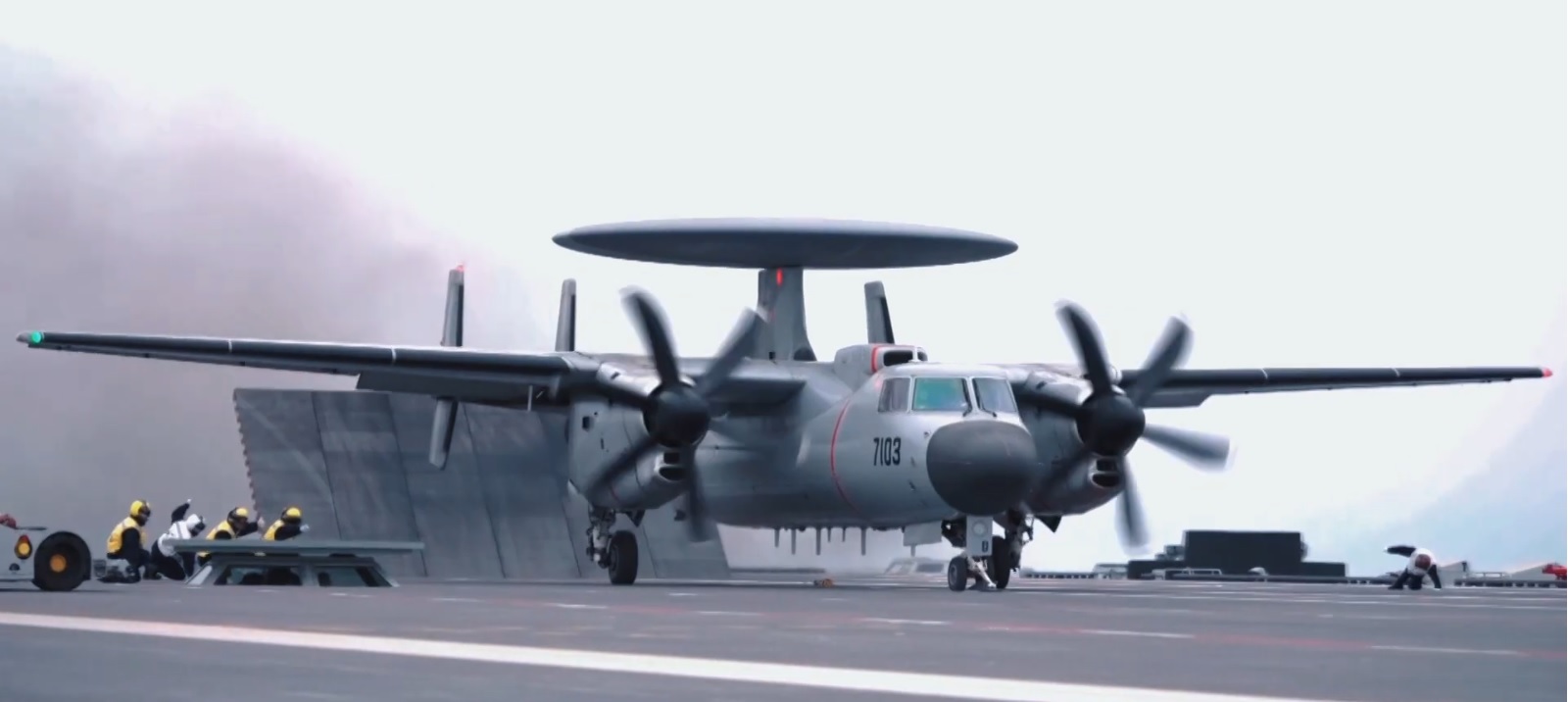J-15T, J-35 and KJ-600 Launch from EMALS on China´s Fujian Carrier
With the Fujian tests, China becomes the second nation to operate electromagnetic catapults on a carrier.
The People's Liberation Army Navy (PLAN) has successfully completed the first public tests of the Electromagnetic Aircraft Launch System (EMALS) on its new aircraft carrier, the CNS Fujian (Type 003). Images and videos, released on social media, show the successful takeoff of the three pillars of its future carrier air wing: the J-15T heavy fighter-bomber, the fifth-generation stealth J-35, and the KJ-600 early warning aircraft.
These trials mark a technological milestone. This is the first time the PLAN has demonstrated the full operational capability of electromagnetic catapults to launch aircraft from a carrier. If their performance is confirmed, China will become only the second country in the world to master this technology, behind only the United States. This technological feat is particularly significant when compared to the development of the EMALS on the U.S. carrier USS Gerald R. Ford (CVN 78), which faced prolonged delays and technical challenges to become fully operational. China's success in this field is a clear demonstration of its expertise and engineering, achieving a level of technological parity in a critical area of naval warfare.
The "Fujian's" Aerial Trident
The Fujian's air wing, of the CATOBAR (Catapult Assisted Take-Off But Arrested Recovery) type, is key to the PLAN's power projection. Unlike its predecessors, the Liaoning and the Shandong, which operate under the STOBAR (Short Take-Off But Arrested Recovery) system, the Fujian will allow its aircraft to take off at their maximum weight, significantly increasing their range, weapons payload, and combat autonomy. The powerful air component of China's new generation of aircraft carriers will consist of:
- J-15T: This is the modernized version of the J-15 "Flying Shark" heavy fighter-bomber. Equipped with new national engines, state-of-the-art avionics, and a powerful Active Electronically Scanned Array (AESA) radar, the J-15T will serve as a heavy fighter-bomber, handling air superiority and long-range strike missions.
- J-35: The true star of this demonstration is the fifth-generation J-35 fighter. This aircraft, with a silhouette that shows the influence of the American F-35, represents the air wing's stealth component. Its ability to operate covertly will allow the PLAN to penetrate enemy air defenses and carry out attacks with minimal detectability, significantly elevating the carrier's offensive potential.
- KJ-600: The "eye in the sky" for the naval group, the KJ-600, is the Chinese counterpart to the U.S. Navy's iconic E-2 Hawkeye. With its large rotating AESA radar, the KJ-600 provides crucial, comprehensive situational awareness, coordinating defensive and offensive operations and extending the fleet's detection range.
Electromagnetic Catapults: A Technological Leap for Naval Warfare
The Electromagnetic Aircraft Launch System (EMALS) is a launch system that uses a linear induction motor instead of traditional steam pistons. While the core function remains the same, the technological shift is radical and offers significant advantages.
Steam catapults, while proven reliable since their introduction in the 1950s, have limitations. Their power is often excessive, causing premature wear and tear on aircraft fuselages. Additionally, their all-or-nothing nature makes it difficult to launch lighter aircraft, such as drones, an increasingly vital component of modern naval aviation.
In contrast, EMALS uses stored kinetic energy and solid-state electrical power conversion, allowing for precise computerized control of launch power. This results in smoother acceleration and exact control of final speed, reducing stress on the aircraft. The benefits are numerous:
- Increased efficiency and sortie rates: The system recharges faster, allowing for more launches in less time and, therefore, a higher sortie generation rate.
- Versatility: EMALS can be adjusted to launch a wide range of aircraft, from lightweight drones to heavy fighters, a capability that steam catapults lack.
- Cost reduction: In the long term, the electromagnetic system requires less maintenance and personnel while also extending the service life of the aircraft.

Toward a Global "Blue Water" Navy
The deployment of the CNS Fujian and the validation of its air launch systems are a powerful demonstration of force for the region and for the United States. This advancement positions China as a naval power capable of contesting control of the seas and projecting its influence globally.
China's ability to develop and commission a carrier of this size (a vessel of almost 100,000 tons, comparable in dimensions and capabilities to the American Ford, although without nuclear propulsion) with such advanced technology as electromagnetic catapults and its own embarked fifth-generation fighter, underscores the speed and effectiveness of its defense program. The PLAN is rapidly closing the technological gap that separated it from the US Navy, transforming the balance of power in the Pacific and beyond.

/https://aviacionlinecdn.eleco.com.ar/media/2025/09/j_35_despegue_emals_fujian_1.jpeg)
Para comentar, debés estar registradoPor favor, iniciá sesión